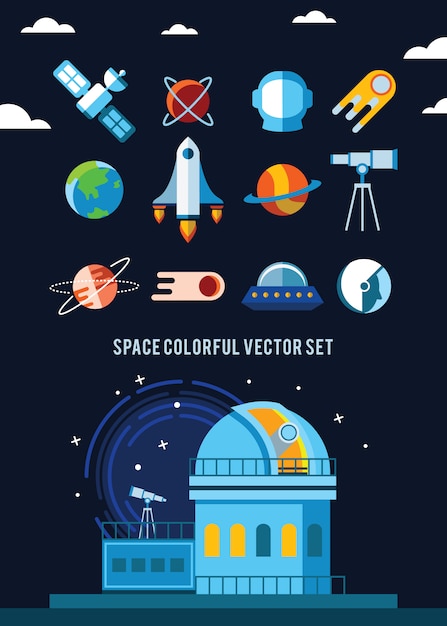

NASA was established on July 29, 1958.
NASA stands for National Aeronautics and Space Administration.
The first American to orbit the Earth was John Glenn, a NASA astronaut.
NASA’s most famous space program is the Apollo program, which landed humans on the Moon.
The Hubble Space Telescope, launched by NASA in 1990, has provided incredible images of distant galaxies and nebulae.
NASA’s Voyager 1 spacecraft has left the solar system and entered interstellar space.
The International Space Station (ISS) is a joint project between NASA and several other countries.
NASA is aiming to send astronauts to Mars in the 2030s through its Artemis program.
NASA’s Mars rovers, such as Curiosity and Perseverance, have been exploring the Red Planet’s surface for years.
NASA has a program called NEOWISE that detects and tracks near-Earth objects, including potentially dangerous asteroids.
NASA’s Jet Propulsion Laboratory (JPL) is responsible for many of the agency’s robotic missions.
The Space Shuttle program, which ran from 1981 to 2011, allowed astronauts to reach space multiple times.
NASA’s space launches are often conducted from the Kennedy Space Center in Florida.
NASA conducts extensive research on Earth, studying climate change, weather patterns, and ecological systems.
The Opportunity rover, a NASA mission, holds the record for the longest distance traveled by a vehicle on another planet.
NASA’s Deep Space Network (DSN) helps communicate with spacecraft throughout the solar system.
The Saturn V rocket used during the Apollo program is the tallest, heaviest, and most powerful rocket ever built.
NASA’s Lunar Reconnaissance Orbiter has been mapping the Moon’s surface in great detail since 2009.
NASA has sent several robotic missions to study other planets, such as Venus, Mars, Jupiter, and Saturn.
NASA astronauts Peggy Whitson and Christina Koch hold the record for the longest spaceflight by a woman (over 300 days).
The James Webb Space Telescope, set to launch in 2021, will be NASA’s most powerful space telescope yet.
NASA’s Apollo 13 mission, which suffered a critical failure but managed to bring the crew safely back to Earth, inspired the movie Apollo
The Earth Observing System (EOS) satellites operated by NASA provide invaluable data for climate research.
NASA’s Space Launch System (SLS) will be the most powerful rocket ever built and will enable deep space exploration.
The Parker Solar Probe, launched by NASA in 2018, will get closer to the Sun than any previous spacecraft.
The Earth’s ozone hole was discovered by NASA’s total ozone mapping spectrometer in the late 1970s.
NASA’s Chandra X-ray Observatory has detected numerous black holes and helps scientists study the X-ray universe.
NASA has a program called TESS (Transiting Exoplanet Survey Satellite) that searches for planets outside our solar system.
The Mars Helicopter Ingenuity, carried by the Perseverance rover, became the first helicopter to fly on another planet.
NASA’s mission to Jupiter, called Juno, has provided stunning images and valuable data about the giant planet.
In 2015, NASA announced the discovery of liquid water flowing on Mars, raising the possibility of life.
NASA’s Earth Science satellites monitor our planet’s vital signs, such as sea level rise, ice melt, and atmospheric composition.
The Apollo 11 mission, in which Neil Armstrong became the first person to walk on the Moon, was a NASA endeavor.
NASA’s Stratospheric Observatory for Infrared Astronomy (SOFIA) is a modified Boeing 747 that carries a telescope to study the universe.
NASA’s Lyndon B. Johnson Space Center in Houston, Texas, is where astronauts train for space missions.
NASA’s Dawn spacecraft explored the two largest objects in the asteroid belt: Vesta and Ceres.
The Earth Polychromatic Imaging Camera (EPIC) on board NASA’s DSCOVR satellite captures stunning images of our home planet.
NASA’s Kepler mission discovered thousands of exoplanets, revolutionizing our understanding of the vastness of the universe.
The Transiting Exoplanet Survey Satellite (TESS) has already discovered over 2,200 potential exoplanets.
NASA’s Operation IceBridge uses instruments aboard aircraft to monitor polar ice in the Arctic and Antarctic.
The InSight mission successfully landed a robotic geologist on Mars to study the planet’s interior structure.
NASA’s Mars Science Laboratory, which carried the Curiosity rover, landed on Mars in 2012 and continues to explore the planet.
The Lunar Gateway, planned by NASA, will serve as a spaceport and research outpost in lunar orbit.
NASA’s Tracking and Data Relay Satellite System (TDRSS) provides continuous communications links with spacecraft in orbit around Earth.
NASA has an extensive educational program to inspire the next generation of scientists, engineers, and astronauts.
Around the world, coffee enthusiasts enjoy Monin coffee concentrate since it is a multipurpose product. Conveniently combining…
The Importance of Choosing the Right Shower for Your Bathroom Renovating your bathroom can be…
Usain Bolt holds the record for the fastest 100-meter sprint in history.Bolt was named Sportsman…
Love is in the air... and it smells suspiciously like chocolate!Roses are red, violets are…
Life's a beach, take a picture and relax.Sun, sand, and salty kisses. That's what beach…
Hungary is home to the largest thermal water cave system in the world.The Rubik's Cube…